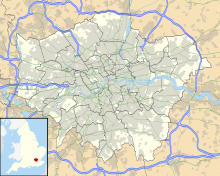National Maritime Museum, Greenwich

National Maritime Museum
|
|
| Established | 1937 |
|---|---|
| Location |
Greenwich London, SE10 United Kingdom |
| Coordinates | 51°28′52″N 0°00′20″W / 51.481111°N 0.005556°WCoordinates: 51°28′52″N 0°00′20″W / 51.481111°N 0.005556°W |
| Collection size | 2 million+ objects |
| Visitors |
2,367,904 (2009) |
| Director | Kevin Fewster, AM, FRSA |
| Public transit access |
|
| Website | rmg.co.uk |
| Area | 200 acres (0.81 km2) |
2,367,904 (2009)
The National Maritime Museum (NMM) in Greenwich, London, is the leading maritime museum of the United Kingdom and may be the largest museum of its kind in the world. The historic buildings form part of the Maritime Greenwich World Heritage Site, and it also incorporates the Royal Observatory and 17th-century Queen's House. In 2012, Her Majesty the Queen formally approved Royal Museums Greenwich as the new overall title for the National Maritime Museum, Queen’s House, the Royal Observatory, Greenwich, and the Cutty Sark. The museum is a non-departmental public body sponsored by the Department for Culture, Media and Sport. Like other publicly funded national museums in the United Kingdom, the National Maritime Museum does not levy an admission charge, although most temporary exhibitions do incur admission charges.
The Museum was created by the National Maritime Act of 1934 Chapter 43, under a Board of Trustees, appointed by H.M. Treasury. It is based on the generous donations of Sir James Caird (1864–1954). King George VI formally opened the Museum on 27 April 1937 when his daughter Princess Elizabeth, later Queen Elizabeth II accompanied him for the journey along the Thames from London. The first Director was Sir Geoffrey Callender.
Since earliest times Greenwich has had associations with the sea and navigation. It was a landing place for the Romans; Henry VIII lived here; the navy has roots on the waterfront; and Charles II founded the Royal Observatory in 1675 for "finding the longitude of places". The home of Greenwich Mean Time and the Prime Meridian since 1884, Greenwich has long been a centre for astronomical study, while navigators across the world have set their clocks according to its time of day. The Museum has the most important holdings in the world on the history of Britain at sea comprising more than two million items, including maritime art (both British and 17th-century Dutch), cartography, manuscripts including official public records, ship models and plans, scientific and navigational instruments, instruments for time-keeping and astronomy (based at the Observatory). Its British portraits collection is exceeded in size only by that of the National Portrait Gallery and its holdings relating to Vice-Admiral Horatio Nelson and Captain James Cook, among many other individuals, are unrivalled.
...
Wikipedia

